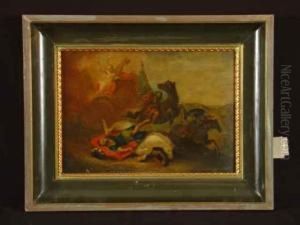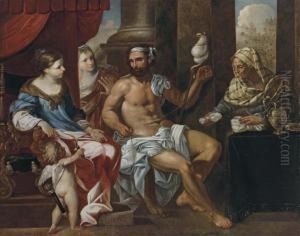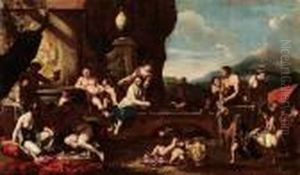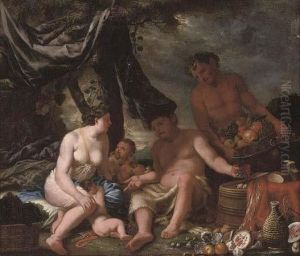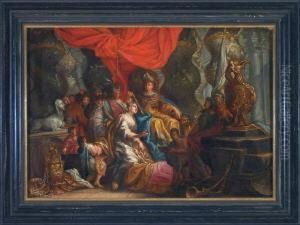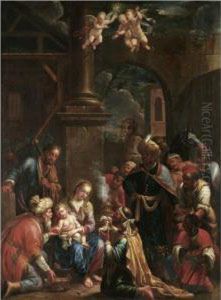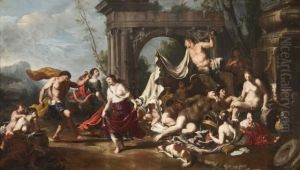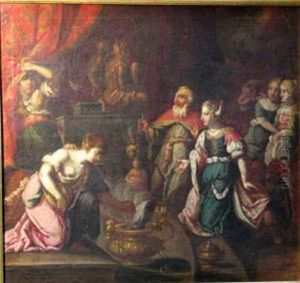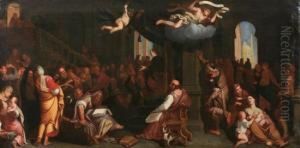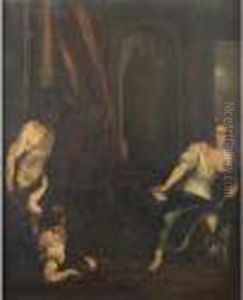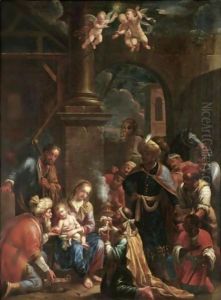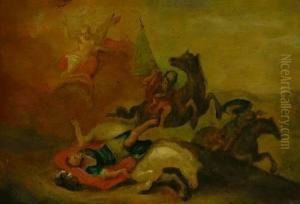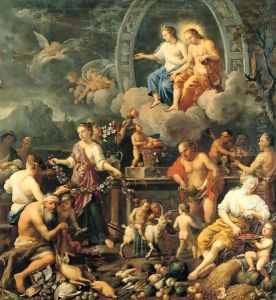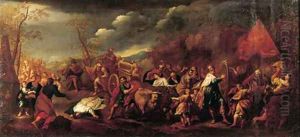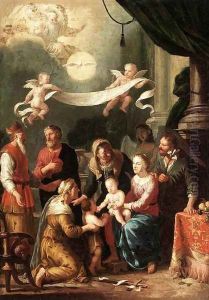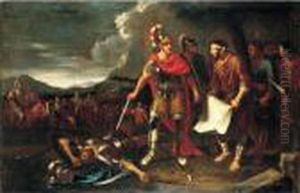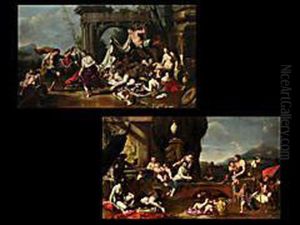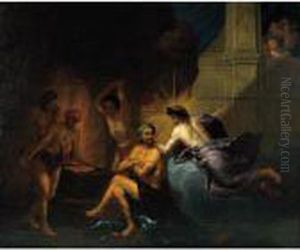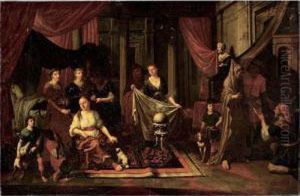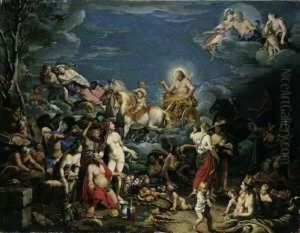Johann Heiss Paintings
Johann Heiss was a German Baroque painter, known primarily for his history paintings and still lifes. Born in 1640 in Memmingen, then part of the Holy Roman Empire, Heiss demonstrated an early talent for painting. He traveled extensively throughout Italy, which was typical for artists of his time to complete their education and to study the works of the Italian masters. Heiss was particularly influenced by the Venetian painters, whose rich color palettes and dynamic compositions would be echoed in his own work.
After completing his travels, Heiss returned to Germany where he became one of the leading painters in Augsburg. His work was characterized by vivid colors and a masterful use of light, which he employed to create dramatic effects in his paintings. Heiss was skilled in various genres, producing history paintings that depicted scenes from the Bible and classical mythology, as well as portraits and still lifes.
Throughout his career, Johann Heiss received numerous commissions from the church and secular patrons, which allowed him to create a significant body of work. His paintings were celebrated for their detail and the lifelike quality of their subjects. Despite his success, there is relatively little documentation on Heiss's life compared to other artists of his era, which may be due to the fact that he spent most of his career in Augsburg, a city that was somewhat removed from the main artistic centers of Europe.
Johann Heiss died in 1704 in Augsburg. His legacy includes not only his contributions to the Baroque style but also his impact on the generations of painters who followed him. Although he may not be as widely known as some of his contemporaries, Heiss's work continues to be studied and appreciated for its beauty and historical significance.




